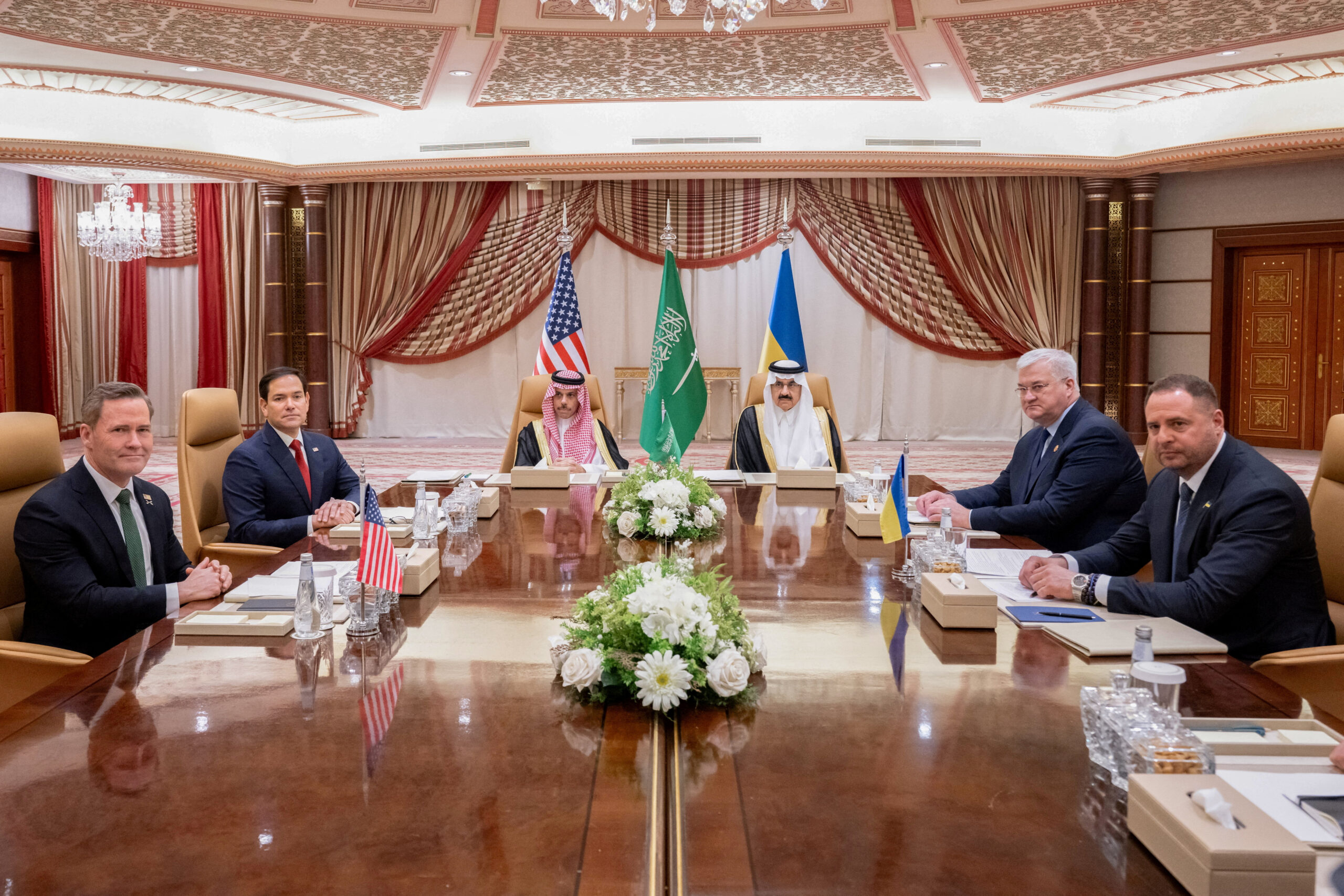The United States and Ukraine reached a breakthrough agreement during high-level talks in Jeddah, Saudi Arabia. Washington has pledged to restore military aid and intelligence sharing with Kyiv, while Ukraine has signaled its willingness to accept a 30-day ceasefire proposal, which now requires approval from Russia.
“Ukraine has expressed readiness to accept the U.S. proposal to enact an immediate, interim 30-day ceasefire, which can be extended by mutual agreement of the parties, and which is subject to acceptance and concurrent implementation by the Russian Federation,” the two countries said in a joint statement following Tuesday’s discussions in Saudi Arabia.
“The United States will communicate to Russia that Russian reciprocity is the key to achieving peace,” the statement continued. “The United States will also immediately lift its pause on intelligence sharing and resume security assistance to Ukraine.”
The summit, which began Tuesday at noon local time (5:00 a.m. ET), was aimed at mending relations after a tense Oval Office confrontation in February between U.S. President Donald Trump and Ukrainian President Volodymyr Zelensky, which had marked a new low in bilateral ties since the war began.
Talks in Saudi Arabia focused on two key issues: establishing a framework for ending the war with Russia and strengthening U.S.-Ukraine strategic cooperation. Another major topic was a deal on U.S. access to Ukraine’s natural resources, which had originally been set for finalization during Zelensky’s visit to Washington but was delayed along with broader U.S. aid packages.
In another pressing matter, Kyiv is urging the West to maintain the freeze on Russian assets held in foreign countries. In an editorial for The Guardian, Yermak stressed that approximately 300€ ($327 billion) worth of Russian assets should remain under embargo, with profits redirected to the rebuilding of Ukraine. About 210€ ($230) billion of these assets are held within the European Union, largely by the Belgian firm Euroclear.
So far, some of the profits from these assets—around €3.55 billion in two installments—have been allocated to the European Ukraine Fund. However, several European countries, including France and Germany, have opposed the total confiscation of Russian assets, citing potential risks to financial markets and the stability of the euro.
“The decade-long aggression from Moscow against Ukraine cannot be overlooked,” Yermak asserted. “European leaders understand this, and we urge them to follow through on the agreements made last Thursday in Brussels.”
At that summit, 26 European leaders signed a declaration calling for a peace agreement that upholds “Ukraine’s independence, sovereignty, and territorial integrity,” while also pushing for Ukraine’s inclusion in peace talks. Hungary, under pro-Russian Prime Minister Viktor Orbán, was the only country to abstain. Meanwhile, there was widespread support for unlocking over €150 billion in EU loans to increase military spending and finding new methods to “facilitate significant national defense spending” across EU member states. A follow-up meeting is expected later this month to refine these plans.

In Jeddah, Ukraine’s delegation is led by Yermak, Foreign Minister Andriy Sybiha, Defense Minister Rustem Umerov, and Deputy Chief of Staff Pavlo Palisa.
On the U.S. side, Secretary of State Marco Rubio and National Security Advisor Michael Waltz head the delegation. Rubio, speaking ahead of the meeting, responded to a question about Ukraine’s proposed ceasefire, acknowledging that while it wouldn’t end the war, it could serve as a starting point for further negotiations. “The ideal outcome would be a complete ceasefire, but any cessation of hostilities could be a step forward,” Rubio told reporters en route to Saudi Arabia.
The question that remains is what geopolitical conditions might allow both Russia and Ukraine to begin serious negotiations. Several Western intelligence officials, speaking to Bloomberg, suggest that Trump may be overestimating Vladimir Putin’s willingness to make concessions. According to the officials, Putin is unlikely to back down on key issues such as the annexation of occupied eastern and southern Ukrainian regions, the exclusion of European peacekeepers, and Ukraine’s required neutrality.
Putin’s demands, according to intelligence sources, are considered intentionally “maximalist,” likely designed to make peace talks more difficult. “As he knows,” one official said, “they are probably unacceptable to both Ukraine and Europe.” Still, the consensus among these officials is clear: the Russian president is determined to press on with the war unless all his objectives are met.
Meanwhile, the military situation on the ground remains highly volatile. In recent hours, Ukrainian drones have struck at least 10 Russian regions, including Moscow, killing three and injuring 18, according to Russian estimates. In retaliation, Russia launched 126 drones and a ballistic missile at Ukraine, Kyiv’s Air Force reported.
Earlier this week, Russian forces claimed significant advances in the Kursk region, which was partially captured by Ukrainian troops in August 2023. Russian forces have reportedly broken through the Sudzha area, capturing the strongholds of Malaya Loknya and Martynovka, and are pushing forward toward the Sumy region.
In the eastern city of Pokrovsk, Ukrainian forces have launched counterattacks to curb Russian advances but have so far achieved limited success. Meanwhile, Kyiv is focused on reclaiming key industrial areas like Udachny and Kotlino, hitting Russian supply lines with a heavy barrage of drone strikes.












